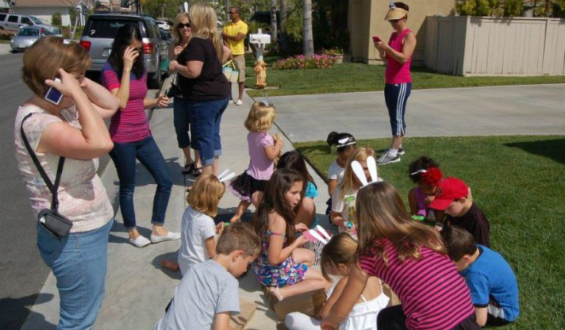
Global Positioning Systems (GPS) can be found in numerous gadgets and devices, but now parents are using the technology to assist them in keeping up with their kids’ whereabouts.
Younger children are not ready to carry a smartphone around, but now trackers are made for kids too young for a cell phone. One of these gadgets is called a PocketFinder, a GPS tracker for pets, children, cars, and seniors.
The tracker is small enough to fit in a backpack or coin purse and is waterproof and tough. PocketFinder monitors the person who is carrying it, alerts parents when the carrier leaves a set boundary and sends notifications when the person arrives at his or her destination and when the child leaves that spot, say Chadwick Phillips and Rich Demuro, reporting for KTLA-TV Los Angeles.
The little tracker will even allow parents to see a “trail” of where the child travels. If the car the young one is in goes over the speed limit, a map will show a red color on the trail.
The tracker costs approximately $130 and has a recurring service fee of $13 a month.
Another GPS device for children is the GizmoPal 2, distributed by LG and available through Verizon. It looks like a watch, but along with tracking, it allows selective calling to a few numbers. It sells for roughly $80.
Filip 2 can be purchased from AT&T, and it also allows calling at a price point of $150.
The Filip 2 and the GizmoPal 2 are both a bit bulky and may be too large for small wrists. Another drawback is that they both require a battery, which means remembering to charge them may be difficult when dealing with young ones.
School administrators are jumping on the bandwagon by allowing parents to track their children on the school bus. SafeStop is a tool for parents and schools that tracks kids’ bus location, receives estimated arrival times and sends special alerts such as delays or a substitute driver.
Parents can use the app to see where the bus is located, and school officials can have a record of every student who gets on or off the bus.
A PocketFinder executive explained the device:
“Primarily, it’s safety and connectivity. That’s what people are most concerned about,” Pocketfinder Vice President Dave Morse said. “It’s everything from knowing that they get to school in the morning if they’re taking the bus or walking home or carpooling, that they got to daycare, or they – they got home.”
KTXL-TV Sacramento reports the device is like a cell phone, but without calling capabilities. It gives parents, explains Morse, a level of security and control even though the children are not in their parents’ line of sight.
Derek Adams, writing for the UK’s Wareable.com, notes that some trackers have geo-fencing which is an electronic wall on a digital map that alerts a parent when the wall is breached.
The Tinitell is a GPS tracker and a water-resistant, voice recognition wrist phone. Designed in Sweden, it sells for about $129, and Loc8tor allows parents to keep track of their children via smartphone or browser. The price is $129.99.
Amber Alert is a small GPS that runs for 40 hours on one charge. The device even identifies whether there are any sex offenders who live in the families’ neighborhoods. The price is $145 with a $15 a month subscription charge.
SAFE Kids Paxie Band is colorful and has GPS connectivity. Its unique features include a temperature monitor to help alert for heat stroke along with heart-rate and activity tracking sensors. It sells for $175 plus monthly charges.
Coming soon is the HereO, a colorful watch that is also a GPS tracker and a panic alert if the child gets lost or is afraid. The price is $179 with a subscription of roughly $5 a month.
Trax is the most expensive device on the market, but also the most sophisticated. It includes real-time mapping, augmented reality for searches for close by situations, geo-fencing, and speed alerts. There is also a built-in accelerometer and gyro, a USB charging port, a pre-paid SIM with open-roaming in more than 30 countries. Trax is priced at $249 and offers a year of free subscription.
As technology becomes cheaper, smaller, and is capable of more features, parents can look forward to an even greater range of devices to keep their children safe.




